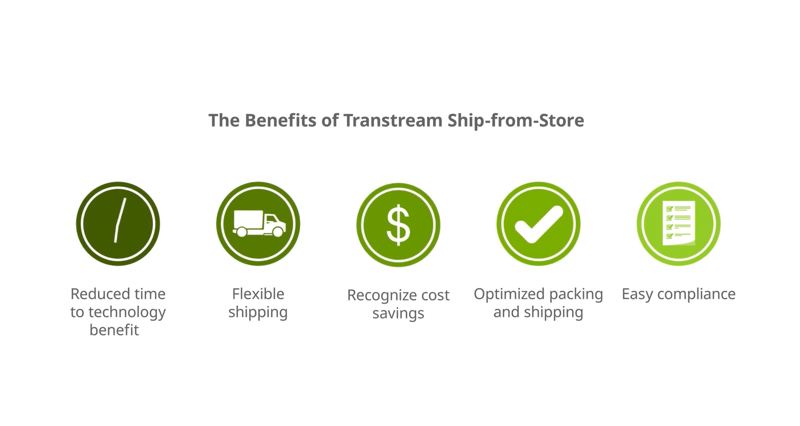In today’s retail world, brick-and-mortar retailers face strong competition from big eCommerce players who can provide an inexhaustible product range from an unlimited inventory supplier pool, with fast and free delivery. However, brick-and-mortar retailers may have a secret weapon to help them compete with these online sellers by transforming their traditional brick-and-mortar supply chain into an omnichannel fulfillment network, turning their physical footprint into a competitive advantage.
Ship-from-store has become an integral component of the growing omnichannel retail structure. By getting inventory closer to their customers, retailers can reconfigure their store locations as warehouses, try-before-you-buy showrooms, and in-person customer service and returns hubs. This is something large eCommerce marketplaces can’t do when shipping from more regionalized fulfillment centers that may be hundreds of miles or more away from the consumer.
This is an extremely important advantage as online shoppers expect fast, free delivery and convenient returns no matter where goods are shipped from. In fact, 35.1 percent of American shoppers expect two-day or less shipping but 85 percent of consumers prefer free over fast shipping.
Achieving this tenuous balance means managing a more diverse community of inventory sources serviced by a wider range of local carrier services capable of meeting increasingly fussy consumer delivery expectations.
To ensure they can meet their brand’s delivery promise, retailers need close integration between their order management system (OMS) and a multi-carrier management solution such as Transtream, which will manage routing, rating, shipping, and tracking for hundreds of parcel, freight, and local delivery services.
Once an OMS receives the order, the best inventory location, such as the store, warehouse, or supplier, is determined. This is based on availability and proximity to the customer. Transtream then applies business rules to determine the most transportation cost-effective way to pack a carton based on the product types, packing rules, expected delivery time, weight, and available carriers. Labels for the carrier, and any necessary bills of lading (BOL), packing lists, international or hazmat compliance forms are then printed, all from one single software interface.
Tracking numbers and shipping charges are all sent back to the OMS, along with transportation cost-effective packing instructions to help reduce after-shipment dimensional weight (DIM) fees and help cut waste at the same time.
Reduced time to technology
One of the other—and often unsung—benefits of Transtream for management of ship-from-store fulfillment is reduced cost of ownership. Transtream is cloud-based, which means retailers can be up and running fast. Retailer administrators have access to web-based tools to onboard carriers, control user access, and configure shipping preferences without having to do the heavy lifting of on-premise deployment and maintenance. This allows them to quickly reduce transportation costs, streamline packing and shipping, and automate carrier, international, and hazmat shipping compliance.
“Today’s retail environment is all about speed. Transtream delivers quick integration to retailers’ distributed order management,” says Mike Graves, VP, Product Management at Pierbridge. “One connector to Transtream enables retailers to get all their shipping needs in one place, allowing them to effectively manage an omnichannel, multi-carrier strategy including ship-from-store.”
In the end, success in today’s competitive retail marketplace comes down to being able to meet consumer demands for increasing product choice, product availability, and free and fast shipping. Retailers are gaining a competitive edge against large eCommerce marketplaces by evolving from a traditional retail supply chain to one adopting omnichannel fulfillment.
As shown in the video below, Transtream’s enterprise shipping solutions and AI capabilities provide retailers with all the tools they need to support omnichannel shipping – improving customer satisfaction while reducing costs.
